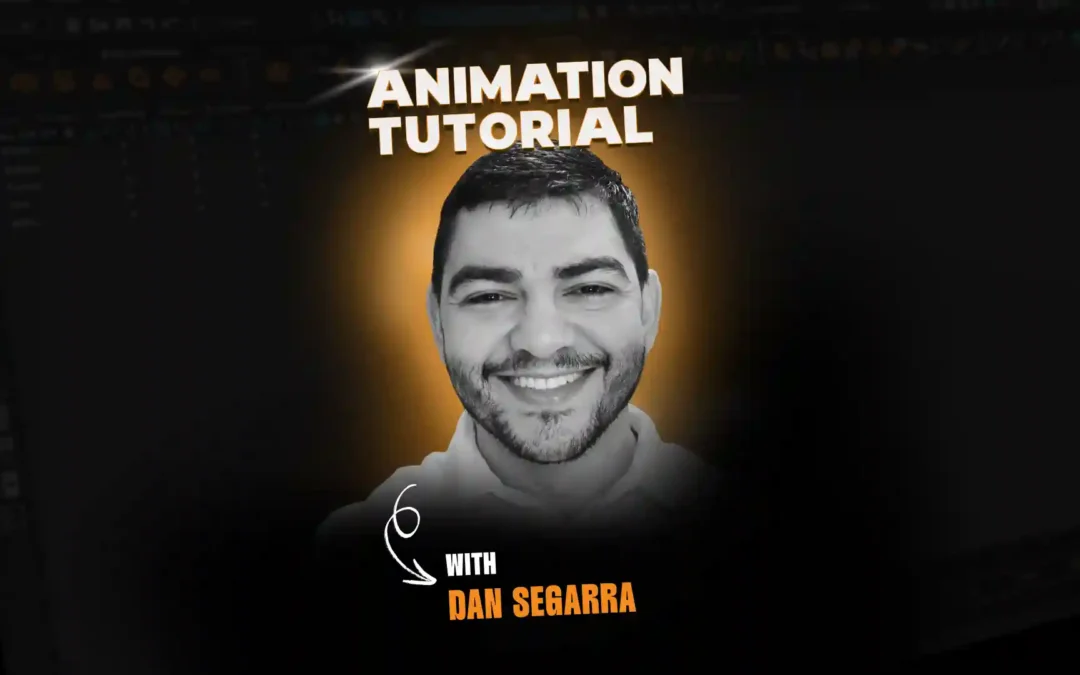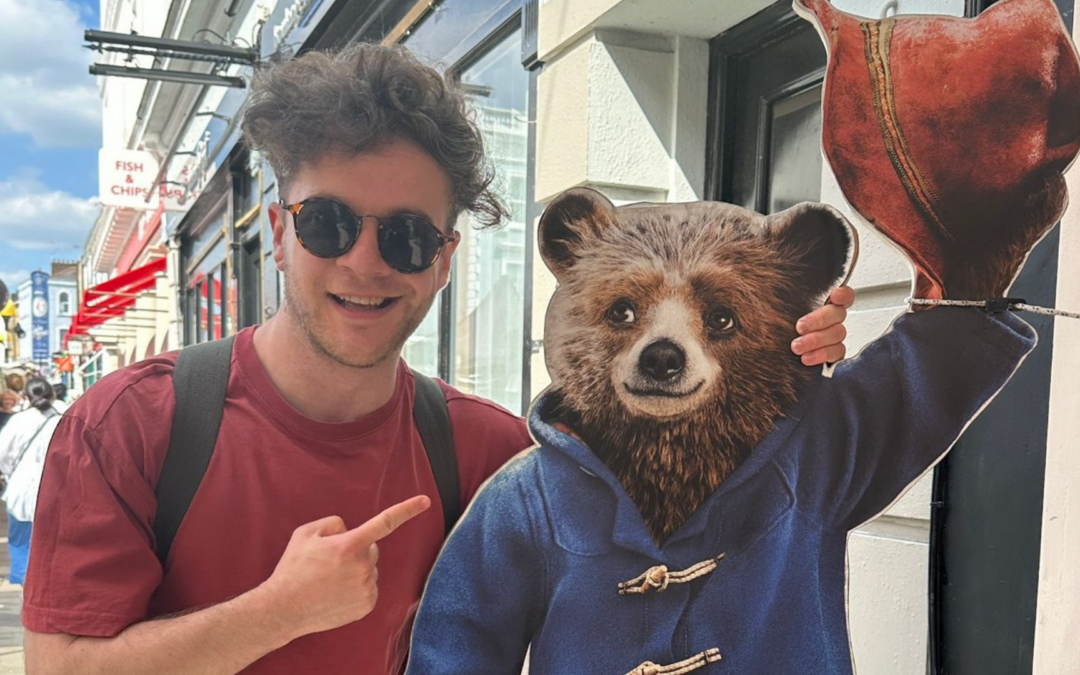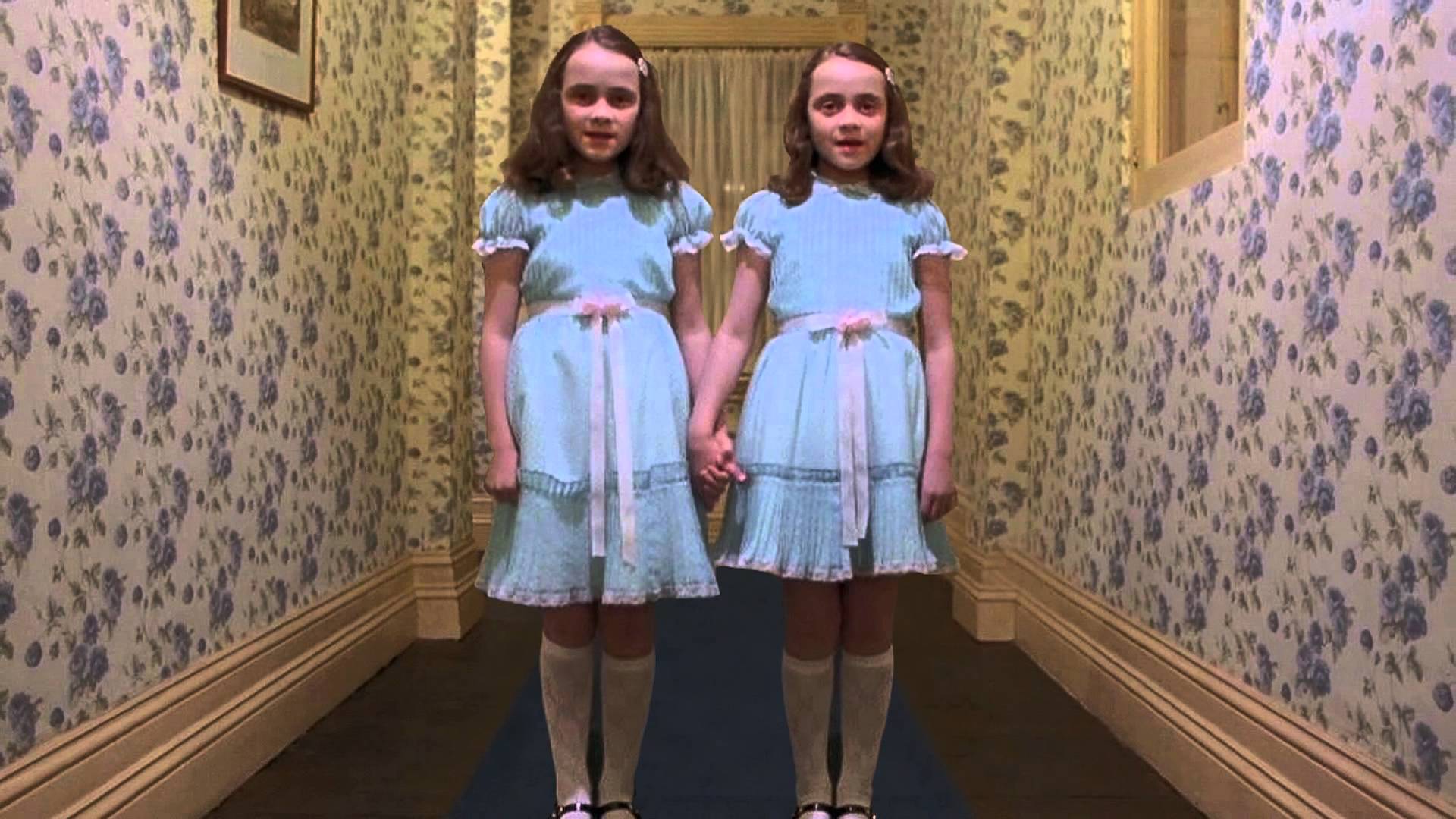
With twinning—as with everything in the animation world—there’s always room to break the rules. But first thing’s first…what the heck is twinning and why should I (mostly) be avoiding it?
Over the years, the subject of “twinning” has come up a lot when students ask questions. What is twinning? Why is it such a bad work in animation?
Well, here’s a transcript of a conversation between myself and my partners in crime, Bobby Beck and Carlos Baena, from sometime in 1995, back when we were a bunch of kids in art school, trying to figure out this animation stuff as much as we could…
Me: Hey, I met an animator from ILM, and he says we should avoid twinning.
Bobby: We should? Ok.
Me: Yeah, it’s bad. He said student work has “tons of it.”
Bobby: Um… what’s “twinning”?
Me: I don’t have the slightest idea… I was hoping you would know!
Bobby: Never heard of it. Carlos?
Carlos: Ummm…. You guys want to get some pizza?
Me: Maybe it’s when you have multiple characters that look too similar?
Bobby: Maybe. Or maybe it’s when different characters move the same way?
Carlos: Guys, can we focus on what’s important? I need pizza!
Ok, maybe that isn’t word-for-word, but it’s pretty close. Before I move on, I do want to say one thing—don’t underestimate the value of a friendship with a fellow animator. If I hadn’t have been friends with Bobby and Carlos, there is a decent chance I would have forgotten all about twinning, and never would have sought out the knowledge of what it is, or how to avoid it. I also wouldn’t have gotten to eat nearly as much good pizza, but that’s a different story.
Anyway, make use of your animation friendships as much as you can. I learned 100 times more from Bobby and Carlos in school than I ever did from any of my classes. Hopefully that isn’t the case at all schools, but finding other students similar to you, who are interested in investigating similar topics, is an invaluable part of your education. Whether you find them at Animation Mentor, or your current school, or even a forum online – it doesn’t matter. What matters is that you find people you can feel comfortable asking “stupid” questions, and who you can learn from and with.
Anyway, our discussion about twinning was pretty typical for us back then. We were constantly reading about animation, watching every animation documentary we could get our hands on, and especially in 1994 and 1995, I think we were probably stumbling across a completely new animation concept every single week that we were all equally mystified by. Twinning was one of dozens, but it was a biggie for us.
As was always the case, we went into full animation investigation mode, and eventually, the three of us were able to piece together enough information to get the general concept. My understanding of twinning, as with my (still limited) understanding of everything else in animationland, has evolved over the years since, and has led me to the following irrefutable mathematical formula:
Now, right off the bat, I want to say something. I want to acknowledge that there are absolutely times, albeit rare, that you will want to specifically use “twinning” in a shot. In fact, I’ll point out a successful use of twinning in a little bit.
But first: What is twinning?
Well, the most basic explanation, from my point of view, is that “twinning” is less a tangible “something” than a lacking of correct overlap and contrast. It’s almost like giving a name to “not having good arcs” or “having confused expressions that don’t communicate properly.”
In short, it’s a “wrong” not a “right.” (okay, okay – usually. See how I covered my bases? Pretty slick, huh? Now you can’t email me and say, “Hey, art doesn’t deal in absolutes!”)
What twinning really is is listed in that “math” formula above. It consists of two distinct facets: twinned posing, and twinned timing.
Posing
Let’s hit the posing thing first.
At it’s heart, “twinned posing” is basically the exact opposite of what I described in my article on finding contrast in your posing, though this is a little more specific. “Twinned posing” generally refers to a pose that feels like a vertical mirror is being held up along the center of your character’s body.
For example, let’s say you wanted to have a character holding his arms out to his side, preparing to give the biggest hug of his life.

Well, most students would (possibly unconsciously) create this pose by spreading the feet a little bit, maybe rotating them out a little bit, and pulling the arms straight out to the sides.
Is this bad?
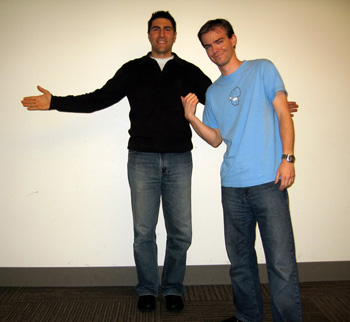
Well…. I don’t know if I’d go so far as to use the word “bad,” because they are going to communicate the correct idea with this pose. When you see this pose, there is a chance that you’ll say, “oh, he’s about to hug someone.” Then again, you will more likely say, “oh, I guess he’s a robot zombie who’s about to hug someone,” because this pose could clearly be much stronger, more organic, and far more interesting to look at.
What’s wrong with it?
Well, if the left hand has been pulled out to the side in exactly the same way as the right hand, and the feet are both rotated out by 10 degrees, and pulled apart an equal distance, this character is going to look incredibly stiff and robotic. You’ve created the all-too-common problem of a symmetrical pose, and symmetry is (usually!) the death-knell of imbuing your character with life.
Here’s the thing – no matter how symmetrical you think someone’s pose is in real life, or how perfectly the arms seem to be identical in your video reference, recreating them that way will almost always result in a “dead” pose. A “twinned” pose. This is one of those times where it is absolutely essential to apply your mastery of the fundamental principles of animation to what you are seeing in your video reference, or in the people around you.
A scene with proper body mechanics and arcs and overlap cannot, by definition, result in twinned timing.
This is one of those moments where you are going to say, “hmm, that pose is kind of interesting, but if I apply what I know about contrast, this pose is going to be so much better!” NOT applying your knowledge of contrast to that pose is what will create a “twinned” feeling in the pose, and the result, at best, is a boring pose. At worst, it’ll feel like your character isn’t truly alive. Either way, you’ve just twinned yourself into a big problem.
Lucky for you, twinned poses are some of the easiest things to fix in animation! This is a double-edged sword, however, because if you forget to fix this, they will stand out even more on a demo reel, and scream “I’m inexperienced!” to recruiters, so be sure to fix your twinned poses!
Fixing them are the easiest thing in the world, and I’d recommend fixing them in the graph editor using the curves. This way, you can fix them in a non-destructive environment and usually not have to redo any of the animation. Using the example from above, for instance, I’d go into the curves for my right arm, and raise it a bit. Then I’d rotate the right hand up a bit, so it isn’t at the same angle as the left wrist.

Next, I’d go down to the feet. Uh oh, they’re still identical to each other. BORING! The first thing I’d do at this point is rotate the left foot out a bit more than the right foot.
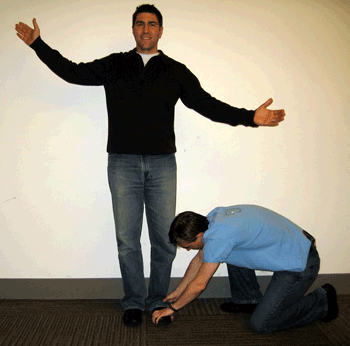
After that, we come to probably the single most important change of all. Having the feet space evenly apart is boring, that’s clear. And the way you fix this problem is equally clear, right? You have to pull one leg further out than the other. Ok, so I’ll choose the left foot. I grab the curves of the left foot in the graph editor, and pull them up a bit to move his left foot further out.
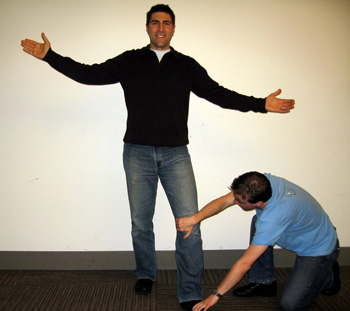
Uh oh! What happened? Well, what likely happened is that the leg hyper-extended, because it pulled too far away from the hips.
So guess what? Now the model is FORCING me to create a more interesting and dynamic pose! I have to grab my character’s hips/torso, and pull his further to the left, and probably down a bit as well. In order for this to look correct, I’ll now have to rotate his chest a bit in x, so that his left shoulder is lower than his right shoulder, and have to rotate his hips the opposite way.
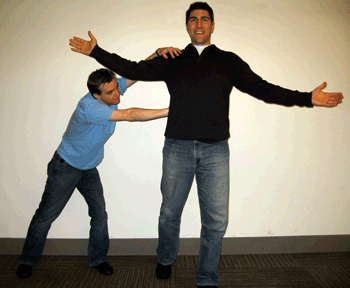
Ta-daa! Consciously avoiding “twinning” has now basically forced you to implement the ideas of contrast, weight, and dynamic posing, not to mention giving you an automatically more pleasing line of action flowing from his right toe up through his spine!
The end result, of course, is a far stronger and communicative pose that is full of life. As with any art (usually!!), the more interesting angles and twists you can put in without hurting the core idea, the better. (obviously you could take this idea too far, and quickly end up with a pose that looks like more like he’s being electrocuted than preparing for a hug!)
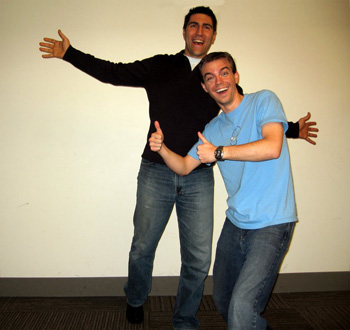
So, to recap: a twinned pose is a mirrored pose. It’s boring, and shows extreme inexperience – mostly because you have to ignore so many other animation concepts (dynamic posing, line of action, arcs, contrast, weight, etc) to get there.
Yikes, this is getting way too long. Man, am I terrible about that or what?! Ok, I’ll keep this next section shorter, since hopefully you’re getting the idea now…
Timing
The other type of twinning, and by far the more common one, is twinned timing.
Now that you’re understanding what twinned posing is, I bet you’ll have a much easier time figuring out twinned timing! Yup, it’s when the spacing on the keyframes of your character’s limbs/body are all equally timed out. In other words, it’s when the left foot stops moving on the same frame as the right foot, or when a cheering character’s arms both hit their extremes on the same frame.
The most common type of twinning I see is when inexperienced animators skip over all the tried-and-true animation assignments and decide they want to jump immediately into acting scenes and dialogue tests. Unfortunately, this (understandable) impatience, leads to nothing but a waste of time and effort, and 99% of the time simply results in a dialogue shot that does more to show off their lack of animation knowledge than anything else.
We see endless demo reels full of acting tests that might have some interesting acting choices, but clearly show no knowledge of basic body mechanics (weight, balance, anticipation, force, etc), bad arcs, and twinned timing. A character’s right hand will rise into a gesture and “hit” that extreme of the gesture on the exact same frame that the head stops moving, which happens on the exact same frame that the left hand clenches into a fist.
Similar to the way it affects posing, this “twinned” timing shows that the animator is not thinking about anticipation, overlap, or arcs. A scene with proper body mechanics and arcs and overlap cannot, by definition, result in twinned timing. Worse, twinned timing creates an extremely robotic feel to the whole piece, and becomes a huge red flag for recruiters.
Overall, you’ll want to avoid twinning like the plague…99% of the time.
Now, if you see this in your work, don’t panic! It is incredibly common, especially in student work, and just as with twinned posing, it is very easy to fix.
Once again, I’d just dive into the curve editor, and experiment with offsetting some keys. First, I’d make sure that my gesturing hand is hitting it’s extreme on the correct frame (which will almost always be the vowel of the sentence’s Operative Word, remember?), and then I’d adjust everything else around it. I might let the head hit it’s extreme a couple frames early, and delay the fist-clench of the other hand by a few frames. (Oh, and just for clarification, I’m not talking about moving the entire curve and offsetting a controller’s animation globally throughout the whole scene, I’m just adjusting this one area of the shot).
Even just those simple adjustments should make a world of difference to your scene, and once you find the amount of offset you like, you’ll still have to go back in there and make sure your arcs are correct, your overlap is working nicely, etc., but this should give you a better foundation to build upon.
Twinned timing creates an extremely robotic feel to the whole piece, and becomes a huge red flag for recruiters.
The other way you might hear “twinning” used, is in reference to the timing (or posing) of multiple characters. Do your characters stop walking on the same frame? Twinning! Do your characters wave at the same time? Twinning!! Do your characters both stop with their right foot forward and left hand on their hip? TWINNING! This is the worst type of twinning, and is the most unnatural of all, so avoid it at all costs.
One of the reasons this comes up so often is because people DO move in twinned ways at times. A sports fan on the edge of his seat will explode into the air when his team scores that goal, and both of his hands might fly up into the air and “hit” their extremes at the exact same moment of time. A music conductor’s hands might (for brief periods) move together in a very lyrical and powerful way as the music crescendos. A couple holding hands walking down the street might have the exact same strides, their feet hitting on exactly the same frames. A man bowing and praying might have his outstretched arms not only stopping on the same frame, but he will likely be twinning his pose as well.
Well, guess what? Those are all perfectly valid times to consciously decide to USE twinning in your posing and timing in order to best sell the ideas of your shot. Having that praying man posed with one arm stretched out to the side will simply not look like a praying/bowing man. Letting that sports-fan’s hands explode up into the air at the same time might feel pretty powerful, depending, as always, on the style of animation your piece requires. (realistic animation, in my opinion, should rarely, if ever, have any twinning at all, and in the sports-fan example, I would still off-set his hands by a frame to make it feel more organic. The more cartoony and exaggerated the style of your project is, the more you can safely twin WHEN YOU HAVE A REASON to do so).
The couple walking with twinned footsteps has a lot of potential to look like bad animation cycles, but if you’re careful in constructing it, you might be able to use the idea of twinned strides to show just how in love they are! They’re so in love that when they hold hands, they share the same stride. Think it sounds crazy? Go sit on a bench for a while at a shopping mall and watch the couples wander by – I guarantee you’ll see more than a few twinning like crazy. The majority of the time, of course, you’ll want to offset these steps by a frame or two in your animation, in order to have a nice organic feeling of life, but I do think a talented animator could potentially use this idea to emphasize the connection the characters share.
The music conductor is a most perfect example, and we’ve all seen how nicely it worked out for Mickey Mouse in “The Sorcerer’s Apprentice”. It was a big moment of realization for me, after Bobby, Carlos, and I had finally figured out the evils of twinning, committed ourselves to a twin-free life of animating, and then realizing that our heroes twinned Mickey Mouse like crazy in Fantasia! I think it was the first time I learned the invaluable lesson that there is an exception to every rule, and that the masters can break those rules when they have a reason to do so.
For me, the best use of conscious twinning is to create a contrast between your “contrasted” posing and timing and a specific moment where you want to really emphasize an idea or sell a joke. For example, you could have some nicely overlapping animation, fun dynamic (“contrasted”) poses and timing of your character sneaking through an alley, and then the character hears something and zips into a shadow where he stands bolt upright, eyes wide in fear. This “twinned” pose might really sell your idea of “fear,” and if you are working in a more cartoony, style you could twin the timing as well.
Overall, though? Overall, you’ll want to avoid twinning like the plague…99% of the time.
And as always, keep animating, and have FUN!
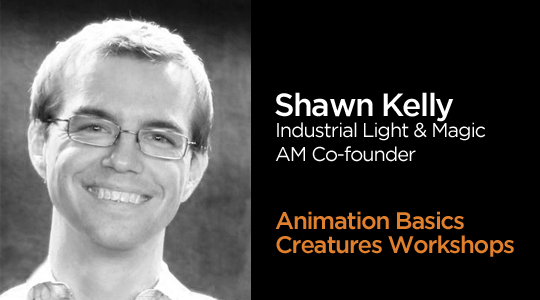
Want to learn animation from pros like Shawn?
Start your animation journey by learning with professional animators from a variety of studios and career paths! Get more information about Animation Mentor’s Character Animation Courses.
